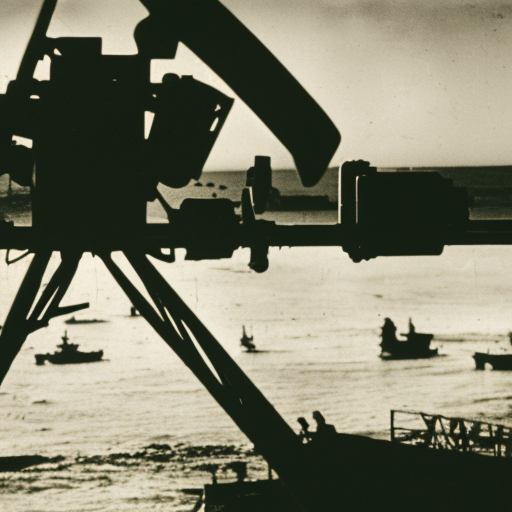The Normandy Campaign: The Invasion of Normandy during World War II
The Normandy Campaign, also known as the Invasion of Normandy or D-Day, was a major military operation that took place during World War II. It was launched on June 6, 1944, by the Allied forces, primarily the United States, the United Kingdom, and Canada, with the objective of liberating Western Europe from Nazi Germany’s control.
Background: By 1944, Nazi Germany had occupied most of Western Europe, and the Allies were determined to launch a large-scale invasion to regain control. The invasion was meticulously planned and involved extensive coordination between the Allied forces.
Preparation: The planning for the Normandy Campaign began in 1943, with General Dwight D. Eisenhower appointed as the Supreme Commander of the Allied Expeditionary Force. The Allies conducted extensive reconnaissance and deception operations to mislead the Germans about the location and timing of the invasion.
The Invasion: On June 6, 1944, the invasion began with the largest amphibious assault in history. The Allies landed on the beaches of Normandy in northern France, with five designated landing zones: Utah, Omaha, Gold, Juno, and Sword. The landings were supported by a massive naval and aerial bombardment to weaken German defenses.
Battle for the Beaches: The landings were met with fierce resistance from the German forces, who had heavily fortified the coastal defenses. The American forces faced the toughest opposition at Omaha Beach, where they suffered heavy casualties. However, through sheer determination and bravery, the Allies managed to establish a foothold on the beaches and push inland.
Breakout and Liberation: Following the successful landings, the Allied forces faced the challenge of breaking out from the beachheads and advancing further into France. They faced strong German resistance, but with superior numbers and firepower, they gradually pushed the Germans back. The breakout was achieved by late July, and the Allies began their advance towards Paris.
The Battle of Normandy: The Battle of Normandy was a series of intense battles fought between the Allies and the Germans in the weeks following the invasion. The Germans launched several counterattacks in an attempt to push the Allies back into the sea. However, the Allies managed to repel these attacks and continued their advance.
Paris Liberated: On August 25, 1944, the French capital, Paris, was liberated by the Allies. This marked a significant turning point in the war and boosted the morale of the Allied forces.
Outcome: The Normandy Campaign was a decisive victory for the Allies. It allowed them to establish a foothold in Western Europe and paved the way for the liberation of France and the eventual defeat of Nazi Germany. The campaign also demonstrated the effectiveness of amphibious assaults and showcased the coordination and determination of the Allied forces.
Legacy: The Normandy Campaign remains one of the most significant military operations in history. It symbolizes the courage and sacrifice of the soldiers who fought to liberate Europe from Nazi tyranny. The invasion also led to the establishment of the Western Front, which played a crucial role in the subsequent Allied offensives against Germany.
In conclusion, the Normandy Campaign, also known as the Invasion of Normandy or D-Day, was a major military operation that took place during World War II. The Allies launched the invasion on June 6, 1944, with the objective of liberating Western Europe from Nazi Germany’s control. The campaign involved a meticulously planned amphibious assault on the beaches of Normandy, fierce battles to establish a foothold, and a subsequent breakout and advance towards Paris. The Normandy Campaign was a decisive victory for the Allies and marked a turning point in the war. Its legacy continues to be remembered as a symbol of courage and sacrifice.












